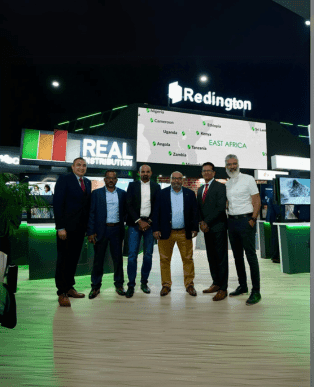Here is an exclusive interview with Adrian Pickering, Regional General Manager MENA, Red Hat, on the growing technology landscape. He discusses how open-source collaboration accelerates innovation within enterprises, enabling them to build flexible, secure, and future-ready solutions. This interaction also provides insights about RHEL AI, a foundation model platform that is helpful for organizations seeking to deploy AI models in their operations. Additionally, it highlights innovative solutions offered by Red Hat that enable businesses to seamlessly integrate their on-premises, public cloud, and edge environments, providing the flexibility to adapt to evolving IT demands.
Please share insights on how emerging technology is shaping the future of enterprises.
Emerging technologies, particularly artificial intelligence (AI) and hybrid cloud solutions, are transforming the way companies operate. These innovations allow businesses to incorporate AI into their current systems and infrastructures without specialised expertise. At Red Hat, our focus is on developing robust platforms such as Red Hat Enterprise Linux AI (RHEL AI) and Red Hat OpenShift AI, which simplify the deployment of AI models across various infrastructures – whether on-premises, in public clouds, or at the edge. By bringing AI closer to data sources, we boost efficiency, reduce latency, and make AI adoption more accessible and seamless at any stage of an organisation’s journey.
One of the major changes in the AI landscape is the shift away from a single, monolithic AI model. Today’s enterprises are adopting a more diverse approach, integrating hundreds or even thousands of smaller, optimised AI models. These models are not only cost-effective but also agile, enabling businesses to customise and fine-tune them in-house without requiring extensive knowledge or skills. This flexibility makes AI more accessible, scalable, and manageable.
With open source, modular AI models, businesses move away from large, one-size-fits-all solutions. Instead, they can deploy models designed for specific tasks or business needs, driving more focused and targeted innovation. The amalgamation of smaller, specialised models with hybrid cloud environments allows organisations to scale their AI initiatives efficiently, optimise costs, and enhance operational efficiency and flexibility. This shift represents a major step towards making AI more adaptable, accessible, and impactful for enterprises in the future.
What role does open-source collaboration play in accelerating innovation across different sectors?
Open-source collaboration is a key driver of innovation, especially in the fast-changing technology landscape. At Red Hat, we actively contribute to open-source projects that help businesses create and deploy AI models, develop hybrid cloud solutions, and scale their operations.
Open source encourages flexibility and adaptability, empowering organisations to tailor solutions to their unique requirements. By supporting a dynamic community of developers and partners, we accelerate innovation across industries, enabling businesses to adopt and deploy advanced technologies without being confined to proprietary systems. Additionally, open source promotes transparency, community-driven enhancements, and rapid problem-solving, all of which are essential for staying ahead of technological progress.
How does Red Hat help organizations adopt open innovation while ensuring security, scalability, and compliance?
Red Hat supports organisations in embracing open innovation through a comprehensive suite of open-source tools, designed to provide flexibility without compromising on security, scalability, or compliance. Solutions like RHEL AI and OpenShift AI offer a robust platform for developing, testing, and deploying AI models and applications across hybrid cloud environments.
Built with security at their core, these platforms include integrated security tools and features that help organisations meet compliance standards while optimising performance and scalability. Our dedication to open source enables businesses to innovate quickly, while our thorough testing and compliance processes ensure that these innovations are both secure and dependable.
What advantages does RHEL AI offer for enterprises looking to develop and deploy AI models on Linux-based infrastructure?
RHEL AI offers significant benefits for enterprises looking to develop and deploy AI models on Linux-based infrastructure. It delivers a robust, scalable platform that enables businesses to efficiently run AI workloads across a variety of environments, including on-premises, public clouds, and at the edge. Optimised for AI model development, RHEL AI supports a wide range of frameworks and tools, allowing businesses to innovate without requiring specialised AI expertise. Furthermore, its seamless integration with other Red Hat solutions, such as OpenShift AI, guarantees that organisations can manage, monitor, and scale their AI models. With high-performance computing and streamlined operations, RHEL AI empowers enterprises to focus on maximising the value of their AI initiatives.
With hybrid cloud and containerization becoming central to modern IT strategies, how does Red Hat help enterprises navigate these transitions seamlessly?
At Red Hat, we assist enterprises in navigating the transition to hybrid cloud and containerisation with a comprehensive suite of open-source solutions such as OpenShift, which offers a unified platform for managing containerised applications across hybrid cloud environments. OpenShift simplifies the deployment and management of applications using Kubernetes and other container orchestration tools. This helps businesses to adopt hybrid cloud strategies seamlessly.
With deep expertise in hybrid cloud environments, we, at Red Hat, ensure enterprises can run applications across diverse infrastructures while maintaining consistency, security, and scalability. Our solutions empower businesses to seamlessly integrate their on-premises, public cloud, and edge environments, offering the flexibility to adapt to evolving IT strategies.
What role does Red Hat and IBM’s partnership play in the evolution of InstructLab?
The partnership between Red Hat and IBM plays a vital role in advancing innovation in AI and hybrid cloud solutions. By combining Red Hat’s open-source expertise with IBM’s AI and cloud technologies, the collaboration has led to the development of platforms like InstructLab, which empowers enterprises to build and scale AI models in a secure, scalable environment. InstructLab provides the necessary tools for innovation, testing, refinement, and shaping the future of AI, with each stage of its pipeline designed for transparency. This transparency is crucial for building trust among the contributors to the project and end-users.
By integrating AI workloads with hybrid cloud infrastructures, the partnership ensures businesses can deploy and manage AI models across various environments, including on-premises, public clouds, and edge devices. This collaboration is a key driver of the open-source ecosystem, bringing together cutting-edge technologies that accelerate industry-wide AI adoption and transformation.
Discuss the importance of collaboration between enterprises, partners, and the open-source community to drive industry-wide digital transformation.
Collaboration among enterprises, partners, and the open-source community is crucial for driving digital transformation across industries. Open-source collaboration enables businesses to tap into community-driven innovations, ensuring their solutions remain flexible, adaptable, and future-ready. At Red Hat, we cultivate a robust partner ecosystem and contribute to open-source projects that help businesses adopt new and emerging technologies like AI and hybrid cloud.
By partnering with the open-source community, enterprises can accelerate their digital transformation, reduce costs, and enhance the efficiency and scalability of their operations. This collaborative approach guarantees that digital transformation is not only rapid but also sustainable.
Red Hat has innovative solutions to enable businesses to seamlessly integrate their on-premises, public cloud, and edge environments and provide flexibility to adapt to changing IT environments. To drive industry-wide digital transformation, it envisions collaboration among enterprises, partners, and the open-source community. Using a collaborative approach and like-minded partnerships, being a leading provider of enterprise open-source software solutions, it aims to accelerate technology adoption, develop continuous innovation, and empower organizations to remain competitive in an ever-changing digital environment.
All Content Rights Reserved by The Catalyst.















